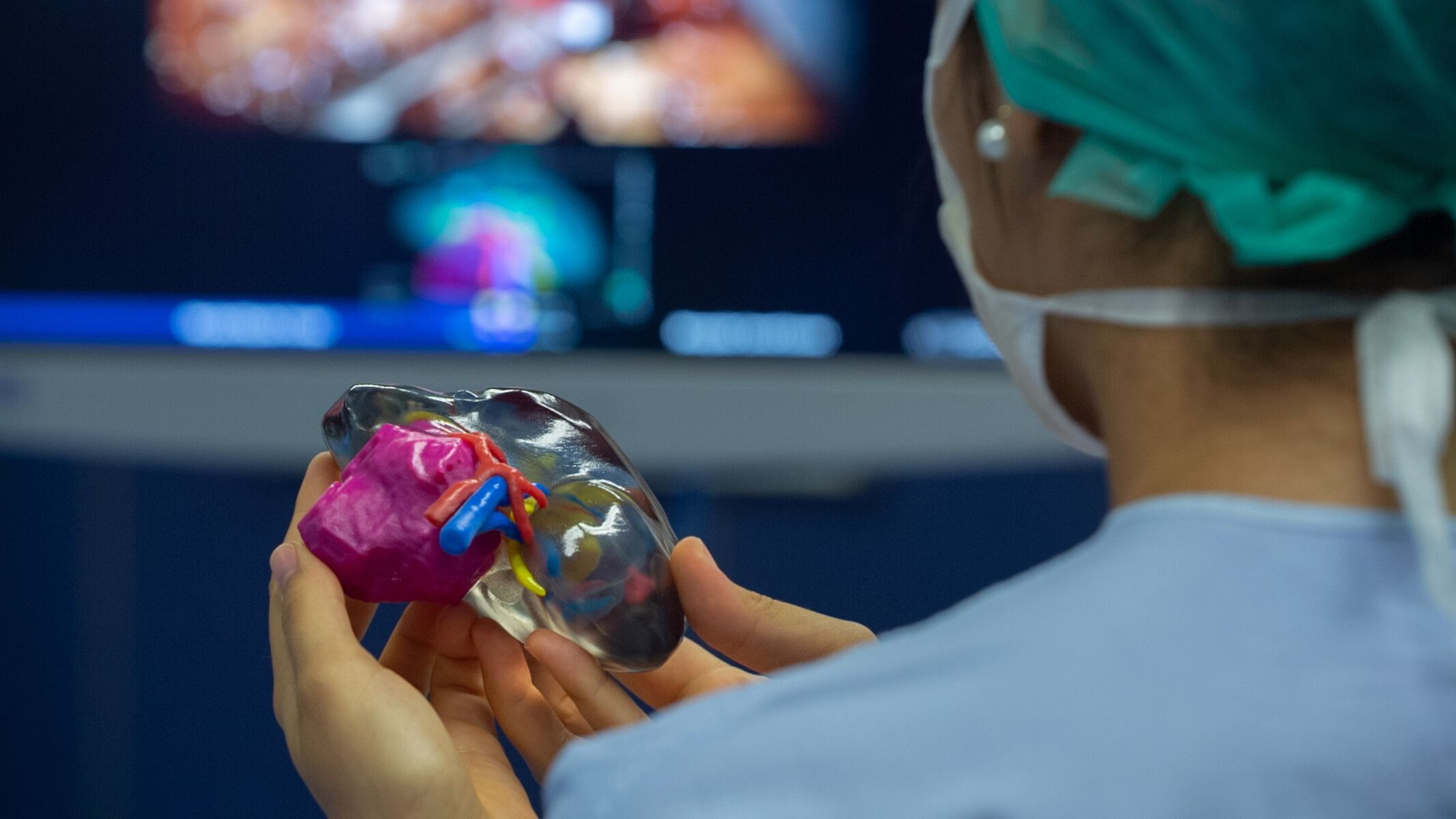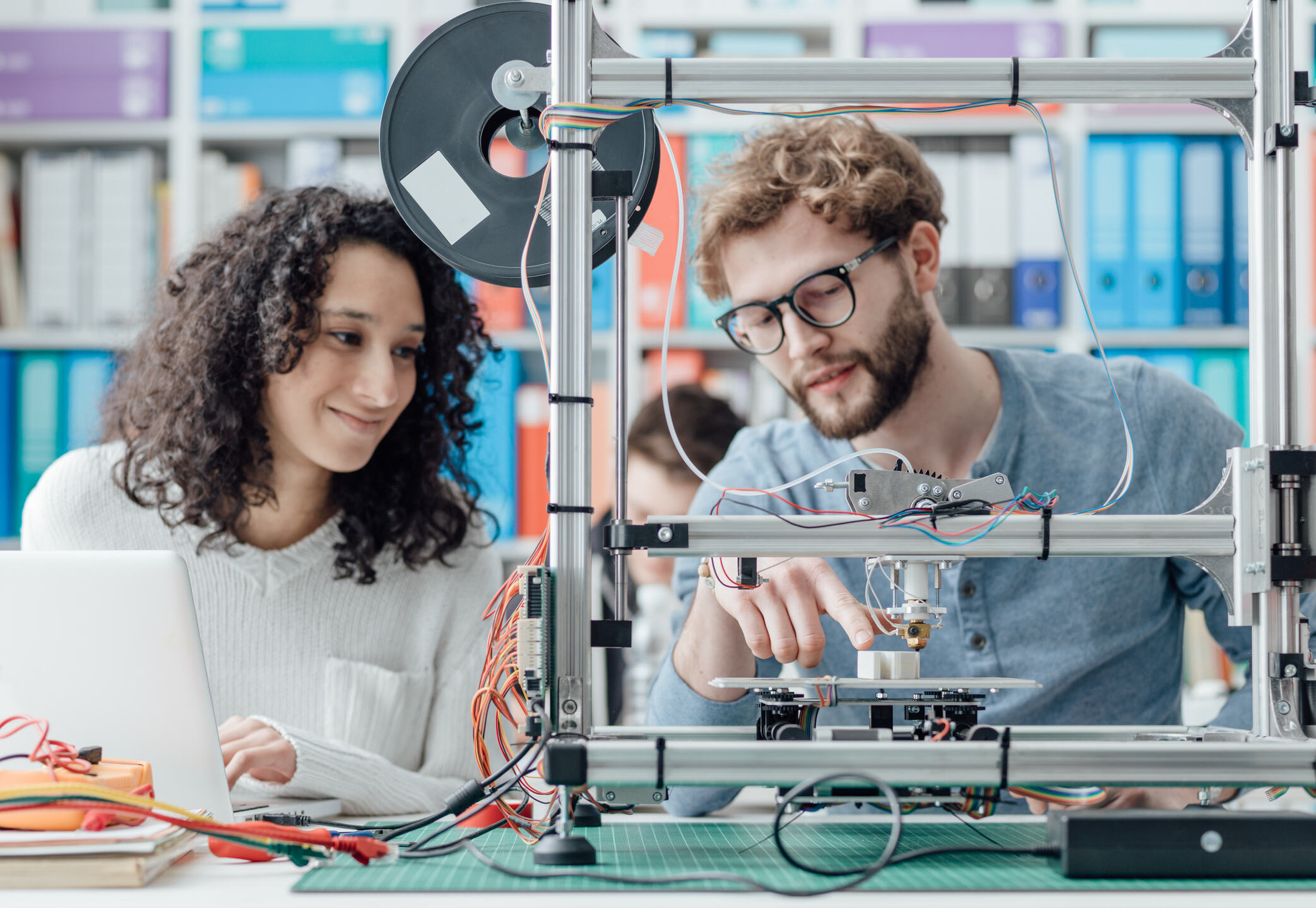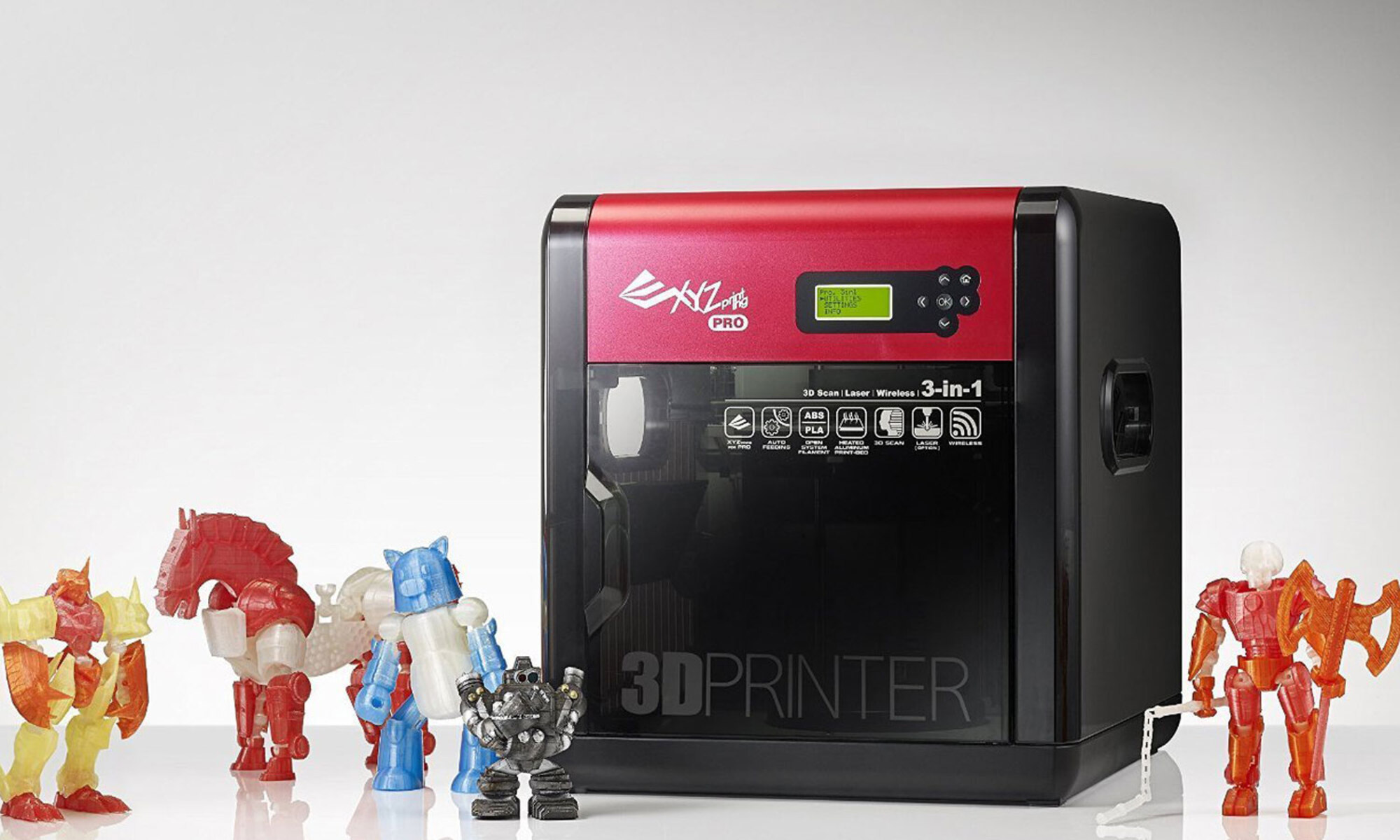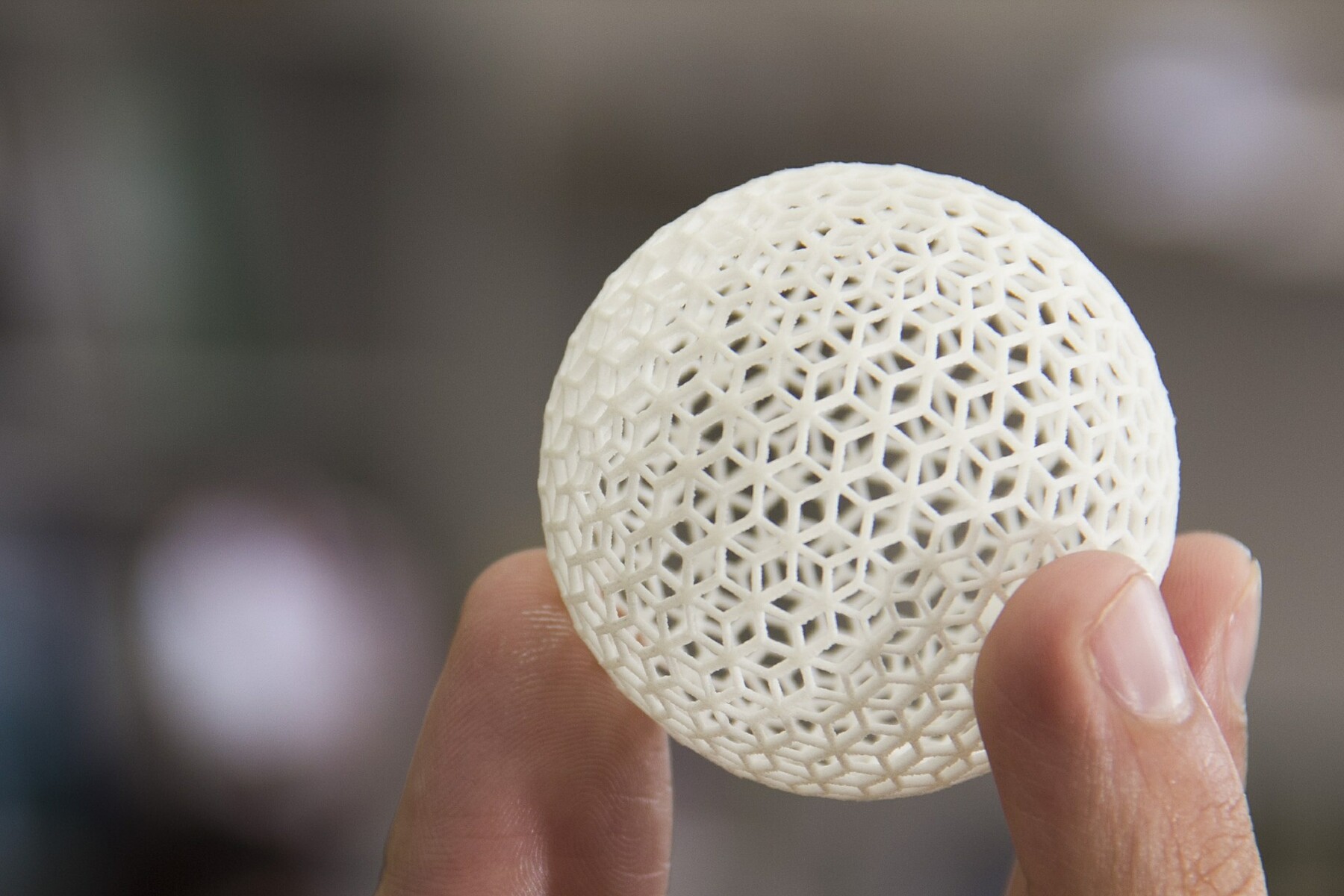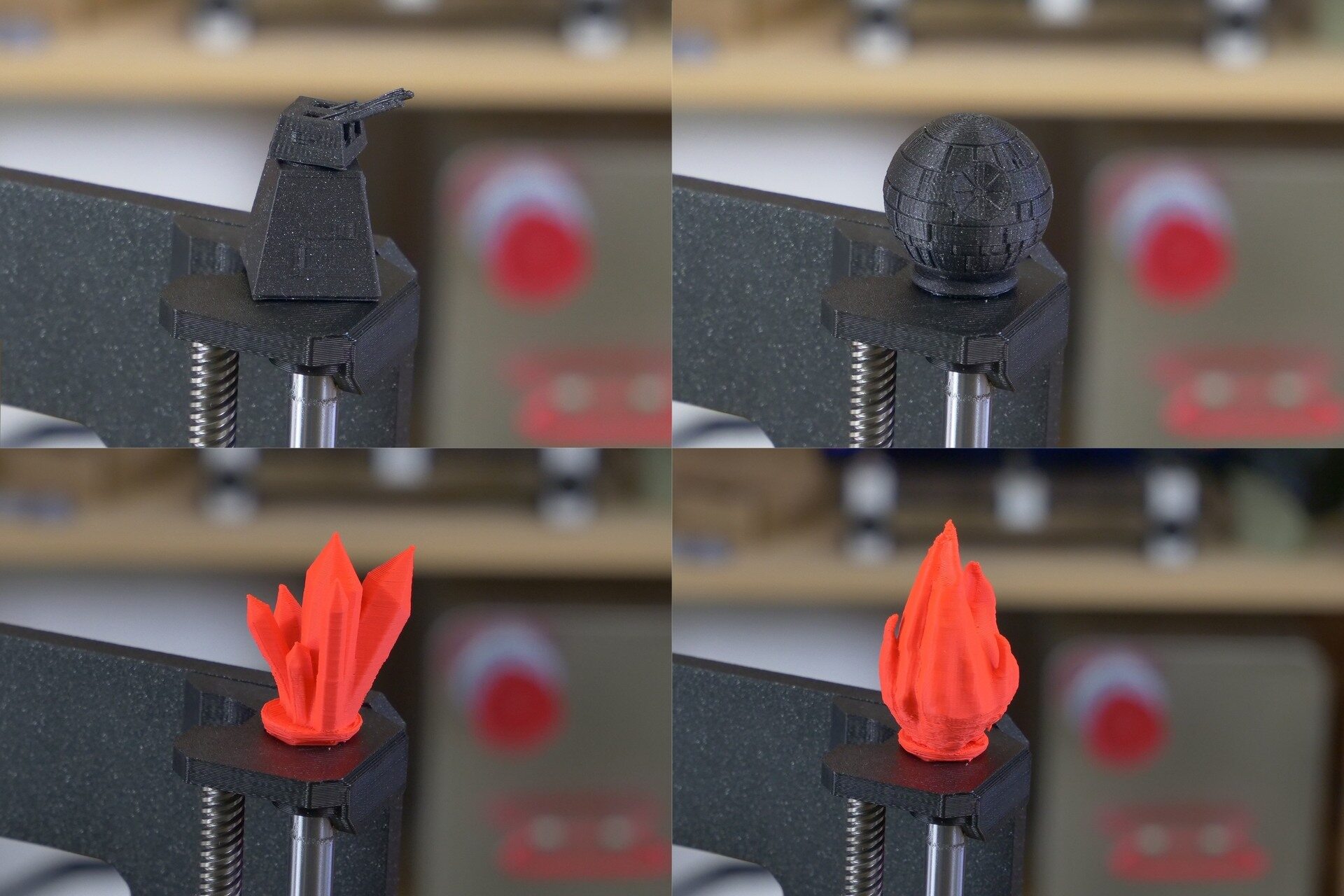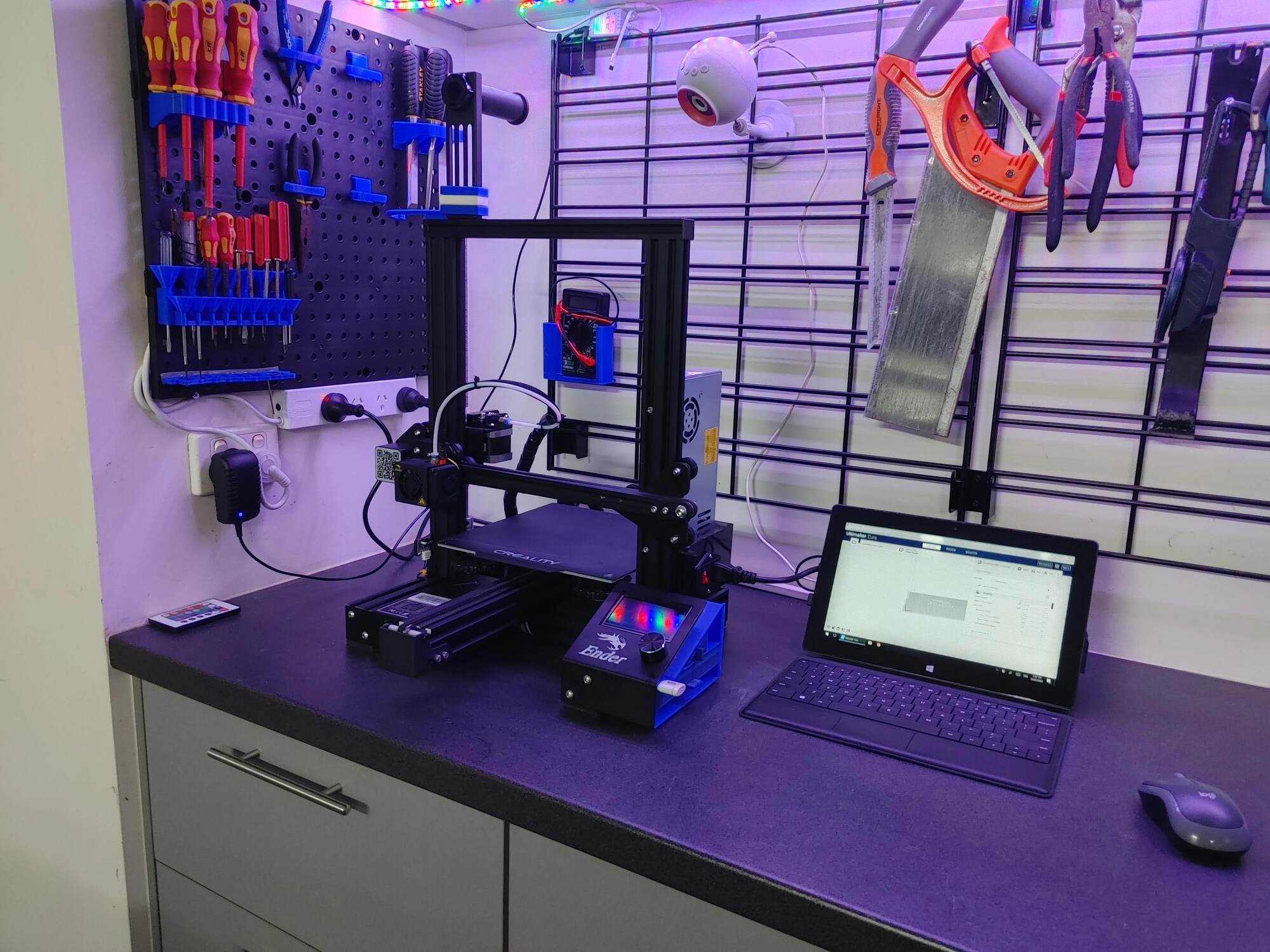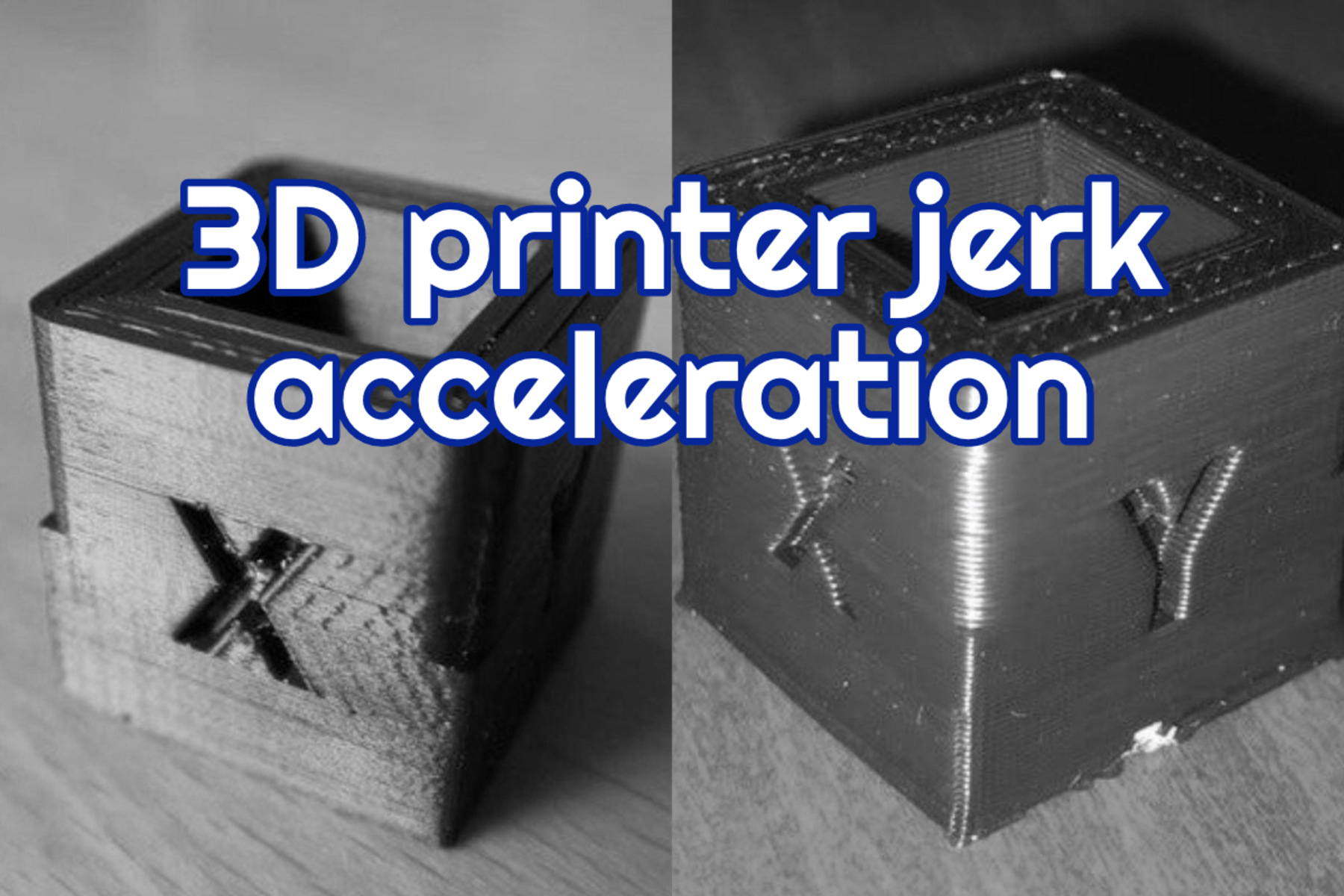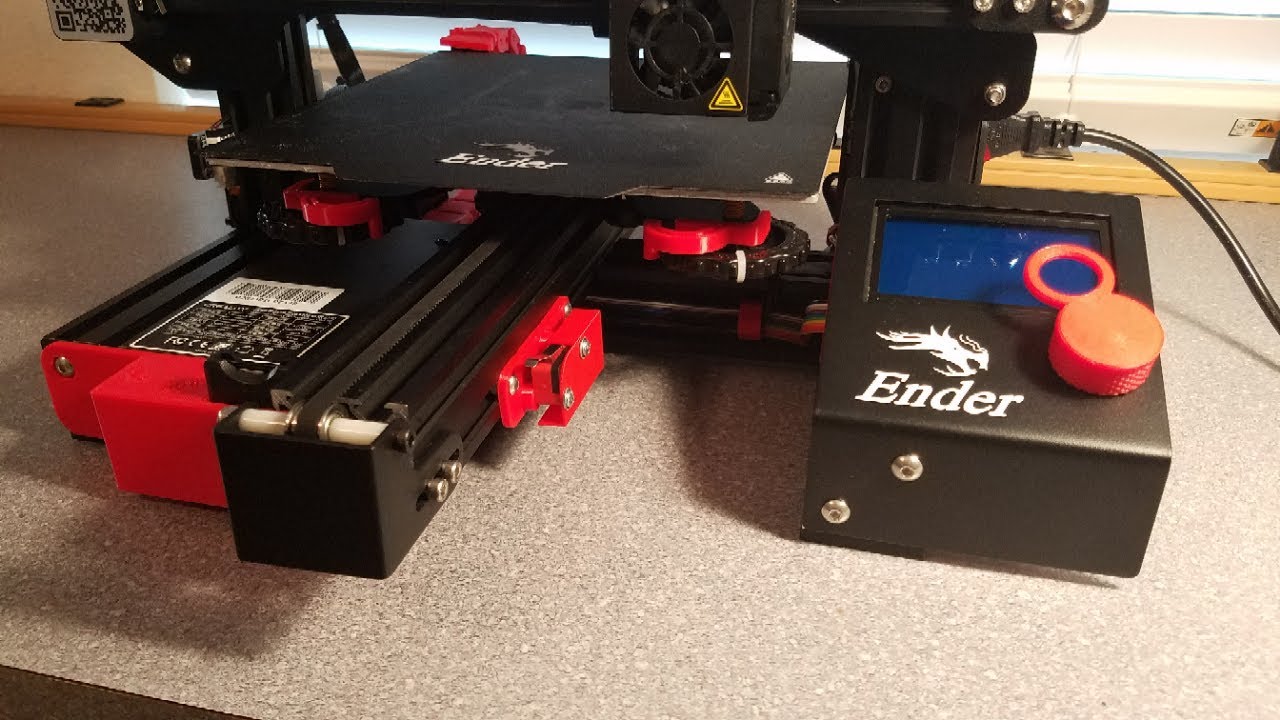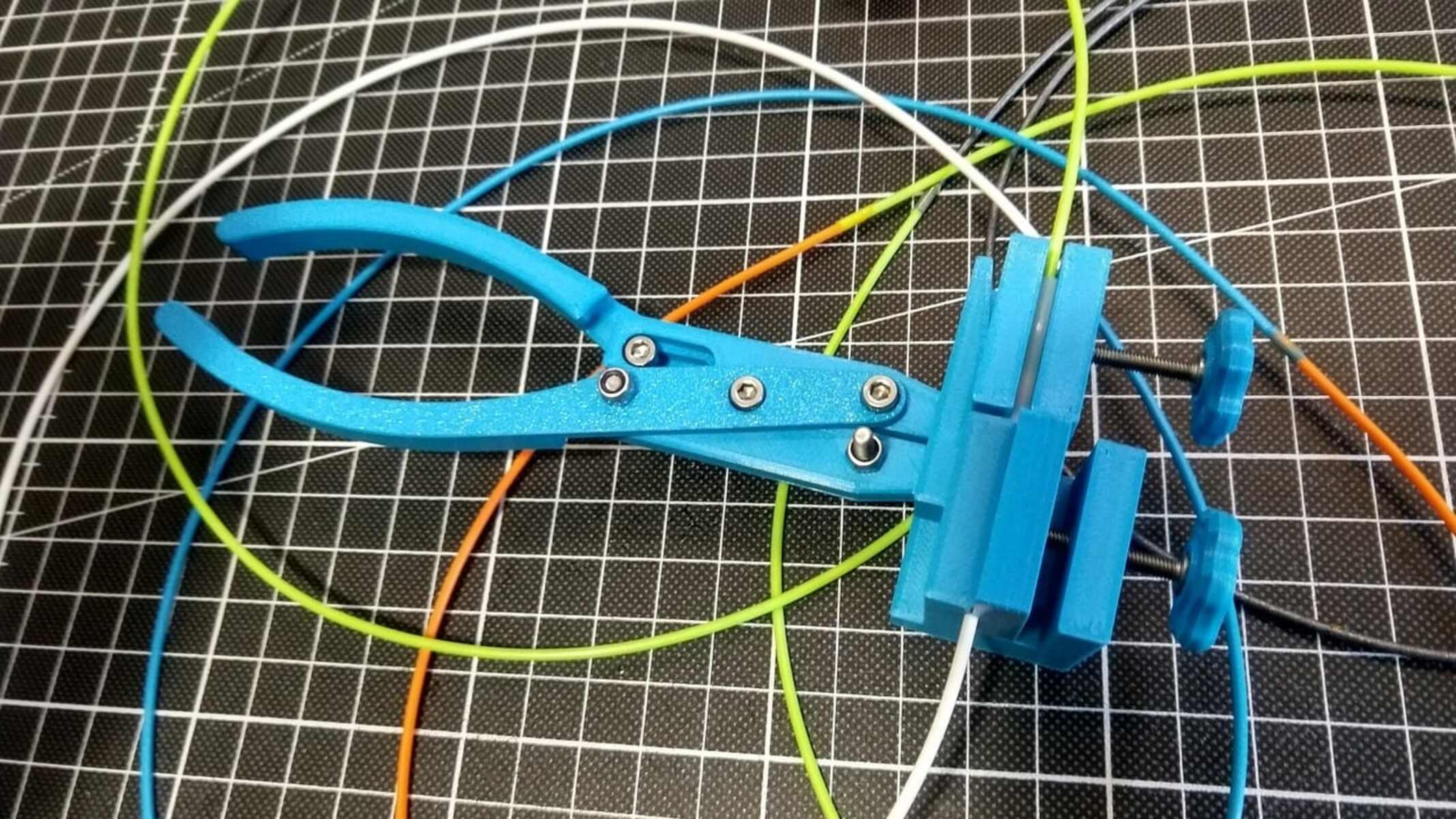What Jobs Use 3D Printing
As the field of 3D printing continues to expand, its applications are being utilized across a wide range of industries. From manufacturing and healthcare to education and art, the use of 3D printing has opened up new possibilities and transformed various job sectors. Let’s explore some of the key industries where 3D printing is making a significant impact.
Manufacturing and Production
One of the primary areas where 3D printing is revolutionizing the job market is in manufacturing and production. The ability to create complex and customized designs quickly and efficiently has allowed manufacturers to streamline their operations and reduce costs. Professionals in this field, such as product designers and engineers, now use 3D printing technology to bring their ideas to life and create prototypes for testing and validation.
Healthcare and Medicine
Another industry that has benefited greatly from 3D printing is healthcare and medicine. Medical professionals and researchers can now create patient-specific models and implants, enhancing surgical planning and improving outcomes. Dentists are using 3D printers to produce precise dental models and aligners, while prosthetists are creating custom prosthetics for individuals with specific needs. This technology has the potential to revolutionize medical treatments and improve patient care.
Architecture and Construction
Architects, engineers, and construction professionals are also embracing 3D printing to enhance their field. With 3D printed models, architects can showcase their designs with a level of detail that was once impossible to achieve. Construction workers can utilize 3D printing to create building components and prototypes, saving time and reducing waste. This technology is reshaping the way buildings are designed and constructed.
Education and Research
3D printing is becoming increasingly prevalent in the education sector as well. It allows students to bring their ideas to life, fostering creativity and innovation. From elementary schools to universities, students can learn about design, engineering, and manufacturing by using 3D printers. Research institutions are also utilizing 3D printing to prototype and develop new technologies, enabling them to experiment and advance their studies.
Automotive and Aerospace Industries
3D printing has made a significant impact on the automotive and aerospace industries. Engineers and designers in these fields can create lightweight and complex components that were previously impossible to manufacture. By utilizing 3D printing, they can also reduce costs and accelerate the design process. The ability to rapidly prototype and iterate enables these industries to stay at the forefront of innovation and efficiency.
Fashion and Jewelry Design
The fashion and jewelry industries are embracing 3D printing to explore new design possibilities. Designers can create intricate and intricate patterns that were once challenging to achieve through traditional means. 3D printing also allows for customization and personalization, enabling designers to cater to individual preferences. This technology is pushing the boundaries of traditional craftsmanship and creating new opportunities in the world of fashion and jewelry.
Art and Sculpture
Artists and sculptors are using 3D printing to push the boundaries of their creativity. By combining traditional art techniques with innovative technology, they can bring their visions to life in new and exciting ways. 3D printing allows for intricate and precise details, giving artists the ability to create complex and unique sculptures that were previously challenging to achieve.
Prototyping and Product Development
Lastly, 3D printing is widely utilized in prototyping and product development. Designers and engineers can quickly iterate and test their product designs, making improvements along the way. This speeds up the development cycle and reduces the time and cost associated with traditional prototyping methods. From consumer products to industrial machinery, 3D printing is transforming the way products are conceptualized and brought to market.
Overall, the use of 3D printing has created a multitude of job opportunities and transformed various industries. Professionals from different sectors are leveraging this technology to enhance their work, whether it’s in manufacturing, healthcare, architecture, education, or the arts. As 3D printing continues to advance, it will likely shape the future of many more job industries yet to be discovered.
What Jobs Use 3D Printing
3D printing, also known as additive manufacturing, has emerged as a revolutionary technology with the potential to transform various industries. It involves creating three-dimensional objects by adding materials layer by layer based on a digital design. While 3D printing initially gained popularity in the realm of rapid prototyping, its applications have expanded to encompass a wide range of sectors, creating new job opportunities and roles.
This article explores the key industries where 3D printing is being extensively employed and the diverse jobs that utilize this technology. From manufacturing and healthcare to architecture and education, let’s delve into the fascinating world of 3D printing and discover how it is reshaping the landscape of various professions.
What sets 3D printing apart is its ability to produce complex shapes and customized designs quickly and efficiently. Traditional manufacturing methods often involve subtractive processes, where raw materials are cut, molded, or drilled to achieve the desired shape. In contrast, 3D printing offers additive manufacturing, enabling the creation of intricate structures that are difficult or impossible to produce using conventional techniques.
This technology has revolutionized the manufacturing and production sector. Professionals such as product designers and engineers now rely on 3D printing to transform their ideas into tangible prototypes. With 3D printers, they can rapidly iterate and test their designs, reducing the time and cost associated with traditional prototyping methods. Moreover, 3D printing allows for the production of unique and customized products, catering to individual preferences and needs.
Furthermore, the healthcare and medical industries have embraced 3D printing to enhance patient care and surgical outcomes. Dentists can create accurate dental models and aligners, while prosthetists can custom design prosthetics for individuals with specific requirements. The ability to print patient-specific models and implants has transformed surgical planning, enabling physicians to visualize and practice complex procedures in advance, ultimately leading to improved patient outcomes.
Architects and construction professionals have also realized the potential of 3D printing in their field. Through 3D printed models, architects can bring their designs to life with intricate detail and present their vision to clients and stakeholders. Construction companies are utilizing 3D printing to fabricate building components and prototypes, reducing waste and saving time in the construction process.
Education and research have greatly benefited from 3D printing as well. Students can now engage in hands-on learning experiences by utilizing 3D printers to materialize their creative ideas. From elementary schools to universities, 3D printing has become a valuable tool for teaching design, engineering, and manufacturing principles. In research institutions, the ability to prototype and develop new technologies using 3D printing has accelerated the pace of innovation and experimentation.
These are just a few examples of the industries and fields where 3D printing is transforming the job market. In the automotive and aerospace industries, 3D printing enables the production of lightweight and complex components, leading to improved fuel efficiency and performance. The fashion and jewelry design sectors are exploring new creative possibilities with intricate patterns and personalized designs. Even the art world has embraced 3D printing, enabling artists and sculptors to bring their visions to life with precise details and intricate structures.
As 3D printing technology continues to advance, we can expect to witness further integration and adoption across a multitude of industries. The continued exploration and utilization of this technology will undoubtedly create more exciting job opportunities and revolutionize existing roles, propelling us into a future where the possibilities of 3D printing are limitless.
Manufacturing and Production
One of the industries that have witnessed a significant transformation with the emergence of 3D printing is manufacturing and production. This technology has revolutionized the way products are designed, prototyped, and manufactured, leading to increased efficiency, reduced costs, and improved customization.
Traditionally, manufacturing processes involved subtractive techniques, where materials are carved, shaped, or molded to create the final product. However, with 3D printing, the approach is additive, allowing for the creation of complex geometries and intricate designs seamlessly.
Within the manufacturing sector, professionals such as product designers, engineers, and manufacturers heavily rely on 3D printing to bring their ideas to life. This technology enables them to quickly prototype and iterate designs, reducing the time and cost involved in traditional prototyping methods. With a 3D printer, it is possible to produce physical models of products in a matter of hours or days, allowing for faster testing, feedback, and refinement.
Furthermore, 3D printing offers unparalleled customization capabilities. Manufacturers can easily tailor products to meet specific customer requirements and preferences. This level of personalization was previously unattainable with traditional manufacturing methods. Whether it’s creating unique medical devices, personalized consumer products, or custom components for industrial machinery, 3D printing gives manufacturers the flexibility to produce highly customized products efficiently.
Another significant advantage of 3D printing in manufacturing is its ability to reduce material waste. Unlike subtractive methods, which often result in a substantial amount of discarded material, 3D printers only use the necessary amount of material to build the object layer by layer. This not only minimizes waste but also contributes to a more sustainable manufacturing process.
Moreover, 3D printing has enabled the production of complex and lightweight designs that were previously challenging to manufacture. Components with intricate internal structures, honeycomb patterns, or lightweight structures can now be easily fabricated using 3D printers. This has proven particularly beneficial in industries such as aerospace and automotive, where light yet sturdy components are essential for performance and efficiency.
In summary, 3D printing has revolutionized the manufacturing and production industry by enabling rapid prototyping, customization, waste reduction, and the production of intricate and lightweight designs. Professionals in this sector now rely on 3D printing technology to bring their ideas to life, streamline their processes, and create highly customized products. As this technology continues to advance, we can expect further integration into manufacturing and production processes, leading to even more innovative and efficient production methods.
Healthcare and Medicine
The healthcare and medicine industry has experienced a significant transformation with the integration of 3D printing technology. From personalized patient care to surgical planning and the development of medical devices, 3D printing has emerged as a valuable tool in improving diagnoses, treatments, and outcomes.
One of the most notable applications of 3D printing in healthcare is the production of patient-specific models and implants. Using medical imaging data, such as CT scans or MRIs, healthcare professionals can create accurate 3D models of a patient’s anatomy. These models allow surgeons to visualize complex structures and plan procedures with greater precision, ultimately leading to improved surgical outcomes and patient safety.
Furthermore, 3D printing has revolutionized the field of prosthetics. Prosthetists can now create custom-fit prosthetic limbs and other devices that perfectly align with an individual’s unique anatomy and functional needs. Gone are the days when prosthetics were limited to standardized options. With 3D printing, a prosthetic limb can be tailored to fit a person’s body perfectly, enhancing comfort and functionality.
In dentistry, 3D printing has also made significant contributions. Dentists can create accurate and precise dental models, crowns, and aligners using 3D printing technology. This allows for better treatment planning, faster production, and improved patient experiences. The ability to rapidly produce custom dental appliances has transformed the field, making treatments more efficient and accessible.
Medical researchers and device manufacturers are utilizing 3D printing to develop innovative solutions. This technology enables the production of complex structures, such as organ-like structures for research and drug testing purposes. 3D bioprinting is an emerging area where biological materials, such as living cells, are combined with synthetic materials to create functional tissue-like structures. This holds the potential to revolutionize regenerative medicine and organ transplantation.
Moreover, 3D printing has facilitated the production of medical devices and implants. Customized implants, such as cranial plates, orthopedic implants, and hearing aids, can be designed and manufactured according to a patient’s exact needs. This level of customization enhances patient comfort and overall treatment outcomes. Additionally, 3D printing allows for the creation of complex, patient-specific surgical tools and guides, enabling more precise and efficient surgeries.
3D printing has truly transformed the healthcare and medicine industry. From personalized patient care to innovative research and development, this technology has opened up new possibilities and improved various aspects of healthcare. As it continues to advance, we can expect 3D printing to play an even greater role in revolutionizing medical treatments, patient care, and the development of cutting-edge medical solutions.
Architecture and Construction
The architecture and construction industries have seen a significant impact with the integration of 3D printing technology. From creating intricate models to constructing building components, 3D printing has reshaped the way architects, engineers, and construction professionals approach their work.
One of the prominent applications of 3D printing in architecture is the creation of detailed and accurate scale models. Architects can now generate intricate physical representations of their designs with a level of detail that was previously unattainable. These models allow stakeholders and clients to better visualize the final product and make more informed decisions during the design process.
Moreover, 3D printing has revolutionized the production of building components and prototypes. Construction professionals can utilize 3D printers to fabricate intricate and complex structures with ease. This technology enables the production of custom or unique components for buildings, offering greater design freedom and the ability to incorporate intricate patterns, textures, and shapes into architectural designs.
3D printing also offers sustainability benefits to the construction industry. By using 3D printing technology, architects and construction professionals can significantly reduce material waste. With traditional subtractive manufacturing methods, excess material is often discarded. However, with 3D printing, only the necessary amount of material is used, resulting in less waste and a more sustainable approach to construction.
Furthermore, the speed and efficiency of 3D printing in construction have also proven to be advantageous. The ability to quickly produce building components and prototypes significantly cuts down the time required for construction projects. This time-saving factor can be particularly beneficial in emergency situations, such as natural disasters, where urgent and rapid construction is required.
Another significant advantage of 3D printing in architecture and construction is the possibility of creating complex geometries and intricate structures. This allows for the development of innovative designs that were previously challenging to execute using traditional construction methods. From intricate facades to internal structural elements, 3D printing offers tremendous design flexibility and the potential to create architectural marvels.
As 3D printing technology continues to advance, the integration of this technology into the architecture and construction industries is expected to grow even further. Architects will have enhanced design capabilities, allowing them to push the boundaries of creativity and constructability. Construction professionals will benefit from streamlined processes, reduced waste, and improved efficiency in project execution. Ultimately, 3D printing is poised to revolutionize the way buildings are designed and constructed, giving architects and construction professionals the tools to build a more sustainable and innovative future.
Education and Research
3D printing has become a valuable tool in the field of education and research, offering hands-on learning experiences and opening up new possibilities for exploration and innovation. From encouraging creativity to facilitating scientific breakthroughs, this technology has made a significant impact in classrooms and research laboratories.
In educational settings, 3D printing allows students to bring their ideas to life in a tangible and interactive way. It fosters creativity and problem-solving skills as students design and prototype their own creations. Whether it’s designing a product, building a model, or creating a piece of art, 3D printing provides students with a practical and engaging learning experience. This technology empowers students to explore and understand concepts in design, engineering, and manufacturing, preparing them for future careers in related fields.
At all education levels, from elementary schools to universities, 3D printers are increasingly being incorporated into curricula. Students can learn about design principles, 3D modeling software, and the intricacies of the printing process. By having access to 3D printing technology, students develop essential skills such as critical thinking, problem-solving, and collaboration. The ability to transform digital designs into physical objects enhances their understanding of spatial relationships and deepens their engagement with the subject matter.
In research and development, 3D printing plays a crucial role in accelerating innovation. Researchers can use the technology to create prototypes and models quickly, allowing for rapid iteration and experimentation. This expedites the development of new technologies, devices, and scientific discoveries. Additionally, 3D printing enables the fabrication of complex structures and intricate designs that would be challenging or impossible with traditional manufacturing methods. This opens up new possibilities in fields ranging from biotechnology to material science.
3D printing is particularly valuable in the medical and biological sciences. Medical researchers can utilize 3D printing to create anatomical models for surgical planning, implant design, and medical education. The production of accurate and personalized models improves the understanding of complex anatomy and enhances surgical outcomes. In the field of bioprinting, researchers aim to fabricate functional human tissues and organs using 3D printing techniques. This has the potential to revolutionize regenerative medicine and provide new avenues for studying human physiology and diseases.
Furthermore, the accessibility and affordability of 3D printing have democratized research and innovation. Researchers in resource-limited environments can now access this technology to advance their studies. The ability to rapidly prototype and test ideas has lowered the barrier to entry for scientific exploration and has allowed researchers to pursue projects that were once cost-prohibitive.
Overall, 3D printing has transformed education and research by providing students with hands-on learning experiences, facilitating innovation, and enabling groundbreaking discoveries in various disciplines. As this technology continues to evolve, it will undoubtedly play an increasingly significant role in shaping the future of learning and expanding the boundaries of knowledge.
Automotive and Aerospace Industries
The automotive and aerospace industries have been revolutionized by the integration of 3D printing technology. From prototyping and production to performance enhancement and customization, 3D printing has had a profound impact on these industries, pushing the boundaries of design and manufacturing.
In the automotive sector, 3D printing has enabled manufacturers to produce complex and lightweight components that were previously impractical or expensive to manufacture using traditional methods. With 3D printing, intricate designs can be easily fabricated, reducing weight without compromising strength. This has led to improved fuel efficiency, increased performance, and enhanced safety in automobiles.
Moreover, 3D printing has expedited the prototyping process in the automotive industry. Designers and engineers can quickly iterate and test their designs, reducing the time and cost associated with traditional prototyping methods. This rapid iteration allows for faster product development cycles, helping companies to bring new vehicles to the market more efficiently.
Another significant advantage of 3D printing in the automotive industry is the ability to produce custom components and spare parts. This technology offers greater design flexibility, allowing manufacturers to create bespoke parts tailored to a specific vehicle or customer requirement. This not only improves vehicle performance but also enables more efficient maintenance and repairs.
In the aerospace industry, 3D printing has transformed manufacturing processes and improved the performance of aircraft and spacecraft. Aircraft manufacturers can use 3D printing to produce lightweight and complex components, reducing the overall weight of the aircraft and enhancing fuel efficiency. This technology allows for the creation of intricate internal structures and optimized designs that push the limits of traditional manufacturing techniques.
Furthermore, 3D printing in the aerospace industry enables the production of highly customized parts. Satellites, rockets, and spacecraft can benefit from components that are specifically designed for a particular mission or payload. The ability to quickly manufacture customized parts using 3D printing has revolutionized the aerospace sector, reducing lead times and enabling advancements in space exploration.
3D printing has also played a vital role in the development of unmanned aerial vehicles (UAVs) and drones. These vehicles often require lightweight and durable parts, as well as complex structures for aerodynamic efficiency. With 3D printing, manufacturers can create customized, high-performance components that meet these requirements, facilitating the rapid development and deployment of UAVs.
Overall, 3D printing has allowed the automotive and aerospace industries to overcome manufacturing constraints, improve performance, and enhance customization. The ability to produce complex designs, lightweight components, and customized parts has propelled innovation in these sectors. As technology continues to advance, we can expect 3D printing to further transform these industries, providing even greater opportunities for design optimization and manufacturing efficiency.
Fashion and Jewelry Design
The fashion and jewelry industries have undergone a significant transformation with the integration of 3D printing technology. This technology has revolutionized the design and production process, allowing for intricate and customizable creations that were once unimaginable with traditional manufacturing techniques.
One of the key advantages of 3D printing in fashion is the ability to create unique and complex designs. Traditional manufacturing methods often involve limitations in terms of geometric shapes and intricate patterns. However, with 3D printing, designers can unleash their creativity and push the boundaries of what is possible. This technology enables the production of three-dimensional structures that are precision-engineered and visually stunning.
Furthermore, 3D printing offers incredible customization capabilities. Designers can create personalized pieces for their clients by tailoring designs to individual preferences and measurements. Whether it’s a custom-fit garment or a piece of jewelry reflecting personal style, 3D printing allows for unparalleled customization and a truly unique customer experience.
In the jewelry industry, 3D printing provides a platform for designers to experiment with intricate designs and intricate details. From delicate filigree patterns to complex interlocking structures, 3D printing enables the production of jewelry pieces that were once difficult or impossible to manufacture by traditional means. Jewelry designers can bring their visions to life with greater precision and speed, allowing them to stay at the forefront of innovation in the industry.
Additionally, 3D printing has the potential to revolutionize the supply chain in the fashion industry. With the ability to produce garments and accessories on-demand, designers can minimize waste and overstocking. This technology allows for a more sustainable and efficient production process, aligning with the growing demand for eco-friendly practices in the fashion industry.
Furthermore, 3D printing technology has democratized fashion and jewelry design. Designers no longer need access to costly equipment and extensive manufacturing facilities. With a 3D printer, they can create prototypes and test their designs in-house, reducing the barriers to entry and enabling up-and-coming designers to unleash their creativity. This has opened up opportunities for emerging talent and fostered innovation in the industry.
3D printing has truly disrupted the traditional fashion and jewelry design processes. This technology has provided designers with the tools to create intricate and customized pieces, pushing the boundaries of creativity and craftsmanship. As 3D printing continues to evolve, we can expect further integration into the fashion and jewelry industries, fostering innovation and redefining the way fashion and jewelry are conceived and produced.
Art and Sculpture
The world of art and sculpture has been profoundly influenced by the integration of 3D printing technology. This technology has introduced new possibilities for artists and sculptors, enabling them to realize their creative visions in ways that were once unimaginable.
One of the key advantages of 3D printing in art is its ability to produce intricate and complex designs with extreme precision. Artists can create unique shapes, patterns, and structures that were challenging or impossible to achieve through traditional sculpting methods. The level of detail and intricacy that can be achieved with 3D printing opens up new avenues for artistic expression.
With 3D printing, artists can transform their two-dimensional designs into three-dimensional objects. This technology allows them to bring their creative ideas to life, exploring different textures, forms, and dimensions. By combining traditional art techniques with innovative technology, artists can create visually stunning and thought-provoking pieces of art that captivate viewers.
Furthermore, 3D printing offers artists the opportunity to experiment with various materials and textures. From metals and plastics to ceramics and even food materials, artists can use 3D printers to explore different mediums and create artworks with unique tactile qualities. This level of versatility and experimentation has expanded the possibilities within the realm of art.
3D printing also enables artists to replicate their sculptures with ease. Once a design is created, artists can reproduce their artwork without losing any detail or quality. This opens up new avenues for artists to sell and showcase their work, reaching a wider audience and making their art more accessible to collectors and enthusiasts.
Additionally, 3D printing facilitates the collaborative process in art. Artists can work alongside engineers and designers, leveraging their technical expertise to further enhance their creations. These collaborations often result in innovative and boundary-pushing artworks that bring together technology and artistic vision.
Moreover, 3D printing has made art more accessible to aspiring artists. With the affordability and accessibility of 3D printers, artists no longer need access to expensive and exclusive art studios. They can create their sculptures in the comfort of their own spaces, democratizing the artistic process and allowing for a wider range of artistic voices to be heard.
3D printing has revolutionized the world of art and sculpture, empowering artists to create intricate, complex, and innovative pieces that were once difficult to achieve. As this technology continues to advance, we can expect further integration into the art world, pushing the boundaries of creativity, craftsmanship, and expression.
Prototyping and Product Development
3D printing has transformed the landscape of prototyping and product development, revolutionizing the way companies conceptualize, design, and manufacture products. This technology has accelerated the product development cycle, reduced costs, and opened up new opportunities for innovation.
Traditionally, prototyping involved lengthy and costly processes. With 3D printing, however, prototyping has become significantly more efficient and cost-effective. Companies can quickly produce physical prototypes from digital designs, allowing for faster iterations and feedback. This rapid prototyping capability enables companies to refine their designs, make necessary adjustments, and bring products to market more quickly.
Moreover, 3D printing offers greater design freedom when it comes to prototypes. With traditional manufacturing techniques, design constraints can limit the creative possibilities. 3D printing eliminates many of these constraints, enabling the production of complex geometries, intricate details, and customized designs. This allows product designers to test and validate their ideas with greater precision and accuracy.
3D printing also facilitates the development of functional prototypes. With the ability to print using a wide range of materials, designers can create prototypes that closely resemble the final product in terms of both form and functionality. This facilitates testing and evaluation, enabling designers to identify and address any design flaws or performance issues early on in the development process.
Furthermore, 3D printing enhances collaboration and communication in product development. Designers, engineers, and stakeholders can physically touch and evaluate the prototype, providing valuable feedback and insights. This level of tangible interaction fosters effective collaboration, allowing for better decision-making and problem-solving throughout the development process.
3D printing also enables companies to explore new design iterations and innovations. With the ability to quickly produce prototypes, companies can experiment with different design variations and evaluate their feasibility. This iterative process allows for greater creativity, encourages innovation, and ultimately leads to better product designs.
Additionally, 3D printing reduces the time and cost required for tooling in product development. Traditional manufacturing methods often involve expensive molds, dies, and other tooling equipment. 3D printing eliminates the need for these tools, allowing for on-demand production of customized parts and components. This flexibility not only reduces costs but also enables companies to respond quickly to design changes and market demands.
In summary, 3D printing has transformed the prototyping and product development process, offering faster iterations, increased design freedom, and cost-effective production. This technology enables companies to develop functional prototypes, test designs thoroughly, collaborate effectively, and fuel innovation in product development. As 3D printing continues to evolve, it will further revolutionize the way companies bring their ideas to life, accelerate product development, and create groundbreaking products that meet the needs and desires of consumers.
Conclusion
3D printing has emerged as a transformative technology that has revolutionized various industries and job sectors. From manufacturing and healthcare to education and art, the integration of 3D printing has opened up new possibilities, improved efficiency, and transformed the way we work and create.
In the manufacturing and production industry, 3D printing has streamlined processes, reduced costs, and enabled customization. It has empowered professionals to prototype and iterate designs quickly, bringing products to market faster and more efficiently.
The healthcare and medicine industry has witnessed significant advancements with the use of 3D printing. From personalized patient care to complex surgical planning, this technology has improved outcomes and enhanced the possibilities for treatments and medical research.
Architecture and construction professionals have embraced 3D printing to enhance design visualization, streamline construction processes, and create customized structures and components.
In education and research, 3D printing has facilitated hands-on learning experiences and accelerated innovation. Students can learn and explore design principles, while researchers can prototype and develop new technologies.
The automotive and aerospace industries have harnessed the power of 3D printing to create lightweight, complex, and customized components that improve performance and fuel efficiency.
In the world of fashion and jewelry design, 3D printing has empowered designers to create intricate and personalized designs, pushing the boundaries of creativity and craftsmanship.
Art and sculpture have been transformed by 3D printing, enabling artists to realize intricate designs and experiment with new materials, textures, and structures.
Finally, in prototyping and product development, 3D printing has revolutionized the way companies bring ideas to life. The technology has accelerated the prototyping process, enabled greater design freedom, and fueled innovation.
As 3D printing technology continues to advance, we can expect further integration into various industries and the emergence of new applications. This technology has not only created new job opportunities but also transformed existing roles, empowering professionals to innovate, create, and excel in their respective fields. It holds the promise of a more sustainable future, offering efficient production methods, reduced waste, and increased customization. With its limitless potential, 3D printing continues to shape the way we live, work, and create, and it is set to play a central role in the industries of tomorrow.







